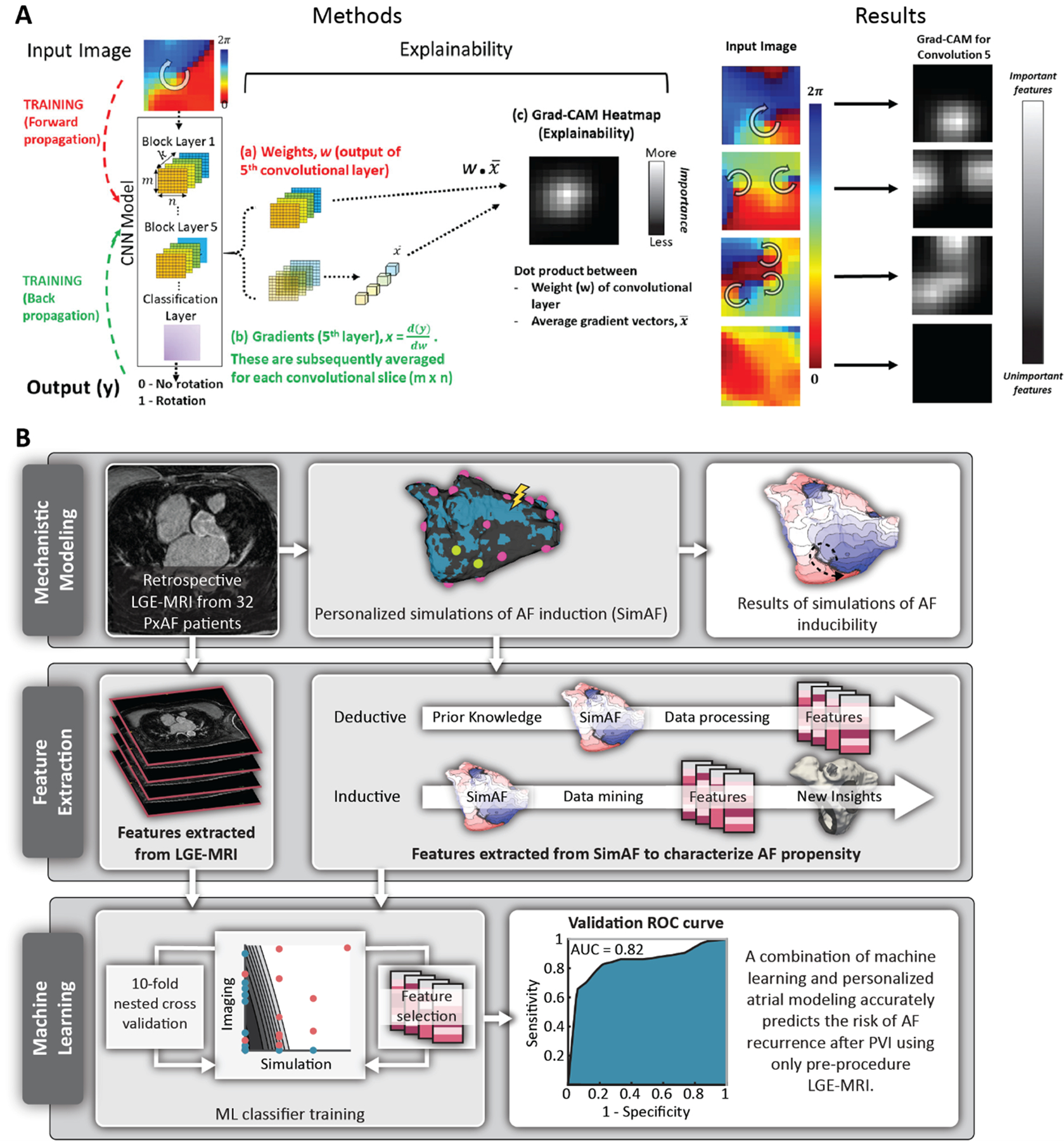Figure 6.

(A) Detecting regions in the atria containing sites of rotational activity. CNN was trained on regional intracardiac voltage time-series data from basket catheters positioned in left then right atrium (left-most column). Explainability analysis (Methods column) to probe how CNN interprets intracardiac AF patterns. In training, ML uses forward propagation of an input tile, creating weights w (red), then backward propagation to update internal weights using gradients x (green). This training process matches each input with its known output label (0,1). Explainability is applied once the CNN is trained. (a) Weights w and (b) gradients x of the output of the fifth convolutional layer are combined by the dot-product operation. (c) Gradient-weighted class activation mapping (Grad-CAM) heatmap plots the importance of each input pixel to the CNN classification. Brighter (higher value) pixels have a greater influence on the CNN. Gradient-weighted class activation mapping (Grad-CAM) heatmaps (Results column) of trained CNN empirically detect AF features identified by experts with domain knowledge. Numbered from top to bottom: 1, Input vector showing site of interest in AF in a 49-year-old female. The heatmap site in Conv 5 coincides with the precise location in the heart coded by experts as a site of rotation. 2, AF in a 63-year-old female with AF, showing 2 concurrent regions of interest. 3, AF in a 64-year-old man, showing 3 regions of interest. 4, AF in 74-year-old-female showing no region of interest. In each case, Grad-CAM heatmaps empirically identified tile regions identified by experts with physiological knowledge, although CNN were not explicitly trained in expert rules. Reproduced and adapted from [108]. (B) Overview of study by Shade et al in which the researchers predicted recurrence of AF post-PVI by conducting simulations of AF induction in atrial models reconstructed from paroxysmal AF patients with fibrosis on LGE-MRI, and trained an ML classifier on simulated AF episodes and on imaging features to predict, pre-procedurally, the outcome of the clinical procedure. Modified from [115].
